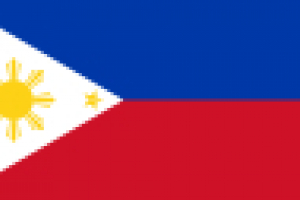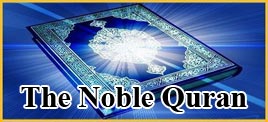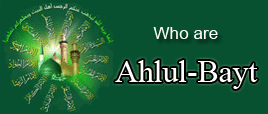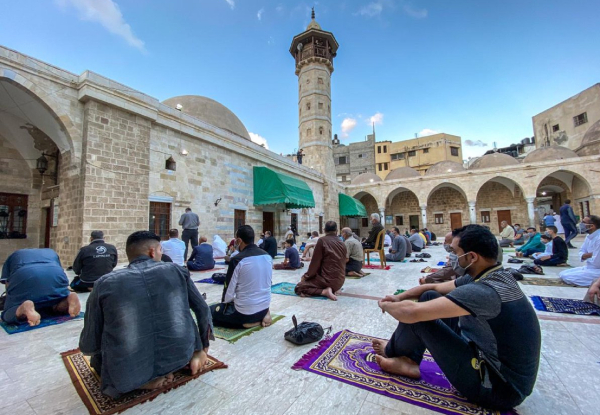The Philippines was named in honor of King Philip II of Spain. Spanish explorer Ruy López de Villalobos, during his expedition in 1542, named the islands of Leyte and Samar Felipinas after the then-Prince of Asturias. Eventually the name Las Islas Filipinas would be used to cover all the islands of the archipelago. Before that became commonplace, other names such as Islas del Poniente (Islands of the West) and Magellan's name for the islands San Lázarowere also used by the Spanish to refer to the islands.
The official name of the Philippines has changed several times in the course of its history. During the Philippine Revolution, the Malolos Congress proclaimed the establishment of the República Filipina or the Philippine Republic. From the period of the Spanish–American War (1898) and the Philippine–American War (1899–1902) until the Commonwealth period (1935–46), American colonial authorities referred to the country as the Philippine Islands, a translation of the Spanish name. From the 1898 Treaty of Paris, the name Philippines began to appear and it has since become the country's common name. Since the end of World War II, the official name of the country has been the Republic of the Philippines.
Location of the Philippines
The Republic of the Philippines consists of an archipelago of 7,107 islands situated se of mainland Asia and separated from it by the South China Sea. The total land area is approximately 300,000 sq km (115,831 sq mi), 67% of which is contained within the two largest islands: Luzon, 108,171 sq km (41,765 sq mi) and Mindanao, 99,078 sq km (38,254 sq mi). Other large islands include Samar, Negros, Palawan, Panay, Mindoro, Leyte, Cebu, Bohol, and Masbate. Comparatively, the area occupied by the Philippines is slightly larger than the state of Arizona. The Philippines' length is 1,851 km, and its width is 1,062 km.
The Philippines claims the Spratly Islands, in the South China Sea, as do China, Malaysia, Taiwan, and Vietnam. The Philippines also has a claim on Sabah, dating back to 1670.
The Philippines' capital city, Manila, is located on the island of Luzon.
Manila, Philippine
Manila during the 1930s before World War II.
CLIMATE
The Philippine Islands, in general, have a maritime tropical climate and, except in the higher mountains, temperatures remain warm, the annual average ranging from about 23° to 32°c (73 to 90°f) throughout the archipelago. Daily average temperatures in Manila range from a minimum of 21°c (70°f) to a maximum of 30°c (86°f) in January and from 24°c (75°f) to 33°c (91°f) in June. Annual normal relative humidity averages 80%. Rainfall and seasonality differ markedly throughout the islands, owing to varying exposures to the two major wind belts, northeast trades or monsoon (winter) and southwest monsoon (summer). Generally, the east coasts receive heavy winter rainfall and the west coasts heavy summer rainfall. Intermediate and southern locales receive lesser amounts more equally distributed. The average annual rainfall in the Philippines ranges from 96 to 406 cm (38 to 160 in).
POPULATION
Population of this country is approximately 100 million. It is the eighth-most populated country in Asia and the 12th most populated country in the world. As of 2013, approximately 10 million additional Filipinos lived overseas, comprising one of the world's largest Diasporas. Multiple ethnicities and cultures are found throughout the islands. In prehistoric times, Negritos were some of the archipelago's earliest inhabitants. They were followed by successive waves of Austronesia peoples. Exchanges with Chinese, Malay, Indian, and Islamic nations occurred. Then, various competing maritime states were established under the rule of Datus, Rajahs, Sultans or Lakans.
LANGUAGES
There are two official languages: Filipino (based on Tagalog), the national language adopted in 1946 and understood by a majority of Filipinos; and English, which is also widely spoken and understood. Spanish, introduced in the 16th century and an official language until 1973, is now spoken by only a small minority of the population. More than 80 indigenous languages and dialects (basically of Malay-Indonesian origin) are spoken. Besides Tagalog, which is spoken around Manila, the principal dialects include Cebuano (spoken in the Visayas), Ilocano (spoken in northern Luzon), and Panay-Hiligaynon. The teaching of Filipino is mandatory in public and private primary schools, and its use is encouraged by the government.
Filipino Muslims celebrate the Kilalang Festival at the Golden mosque in Quiapo.
RELIGIONS
The Philippines is an officially secular state, although Christianity is the dominant faith. Census data from 2010 found that about 80.58% of the population professed Catholicism. Around 37% regularly attend Mass and 29% identify as very religious. Protestants are 10.8% [not in citation given] of the total population, mostly endorsing Evangelical Protestant denominations that were introduced by American missionaries at the turn of the 19th and 20th centuries. The Philippine is a notable Catholic denomination.
Islam is the second largest religion. The Muslim population of the Philippines was reported as 5.57% of the total population according to census returns in 2010, although a 2012 report by the National Commission on Muslim Filipinos estimates it at 11%.The majority of Muslims live in the Bangsamoro region. Most practice Sunni Islam under the Shafi'i school.
An unknown number of Filipinos are irreligious, but they may form as much as 10% of the population. Catholicism's historic dominance is steadily declining, with about 9% of adherents considering leaving their church.
An estimated 2% of the total population practice Philippine traditional religions. Buddhism is practiced by around 2% of the population, and is concentrated among Filipinos of Chinese descent. The remaining population is divided between a number of religious groups, including Hindus, Jews, and Baha'is.
Grand Mosque (Sultan Hassanal Bolkiah Masjid)
GOVERNMENT
Under the constitution of 11 February 1987 the Philippines is a democratic republican state. Executive power is vested in a president elected by popular vote for a six-year term, with no eligibility for reelection. The president is assisted by a vice president, elected for a six-year term, with eligibility for one immediate reelection, and a cabinet, which can include the vice president. Legislative power rests with a bicameral legislature. Congress consists of a senate, with 24 members elected for six-year terms (limited to two consecutive terms). Senators are chosen at large. Senators must be native-born Filipinos and at least 35 years old. A house of representatives is elected from single-member districts for three-year terms (limited to three consecutive terms). Districts are reapportioned within three years of each census. In 2004, 212 members were elected. Up to 52 more may be appointed by the president from "party lists" and "sectoral lists," but the constitution prohibits the House of Representatives from having more than 250 members. Representatives must be native-born Filipinos and at least 25 years of age. Presidential and legislative elections are next scheduled for May 2007.
Davao City mayor Rodrigo Duterte of PDP–Laban won the 2016 presidential election becoming the first president from Mindanao. Camarines Surrepresentative Leni Robredo won the vice presidency. On July 12, 2016, thePermanent Court of Arbitration ruled in favor of the Philippines in its case against China's claims in the South China Sea. On August 1, 2016, the Duterte administration launched a 24-hour complaint office accessible to the public through a nationwide hotline, 8888, and changed the nationwide emergency telephone number from 117 to 911. After winning the Presidency, Duterte launched an intensified anti-drug campaign to fulfill a campaign promise of wiping out criminality in six months. By March 2017, the death toll for the Philippine Drug War passed 8,000 people, with 2,679 killed in legitimate police operations and the rest the government claims to be homicide cases.
Rodrigo Duterte, the current President of the Philippines.
ECONOMY
Efforts to transform the Philippine economy from a primarily agricultural producer of crops for subsistence and export to a more diversified growth economy led by manufactured exports commanding more favorable terms of trade like its Asian tiger neighbors have been repeatedly hindered by natural disasters and external economic shocks. In 1990–91 the islands suffered the triple blow of earthquake, super-typhoon, and volcanic eruption. In succession, there were the even more devastating typhoon of 1995, the Asian financial crisis of 1997, and the global economic slowdown of 2001. In 2005, 14.8% of GDP was in agriculture, 31.7% in industry, and 53.5% in services. In 2004, 36% of the labor force was engaged in agriculture, compared with 16% in industry and 48% in services.
The manufacturing sector, though expanded and diversified since political independence, depends on imported raw materials and cannot supply internal needs. Electronics and telecommunications exports, which grew by double digits in the 1990s and had accounted for at least 75% of export revenues in 1999, proved vulnerable to the worldwide slowdown in consumer demand in the recession of 2001, and the contraction by half in foreign investment as a result of the 11 September 2001 terrorist attacks on the United States.
The Philippines has great potential as a tourist destination. However, since the early 1990s the tourist industry has, in addition to natural disasters and high fuel costs, been afflicted with political difficulties, particularly with the emergence of the Abu Sayyaf (Bearers of the Sword) Islamic fundamentalist group. Tourism receipts peaked in 1997 at close to $3 billion, but in 2000 were less than $2 billion.
The economy performed well at 7.2% GDP growth, the second fastest in Asia.


















